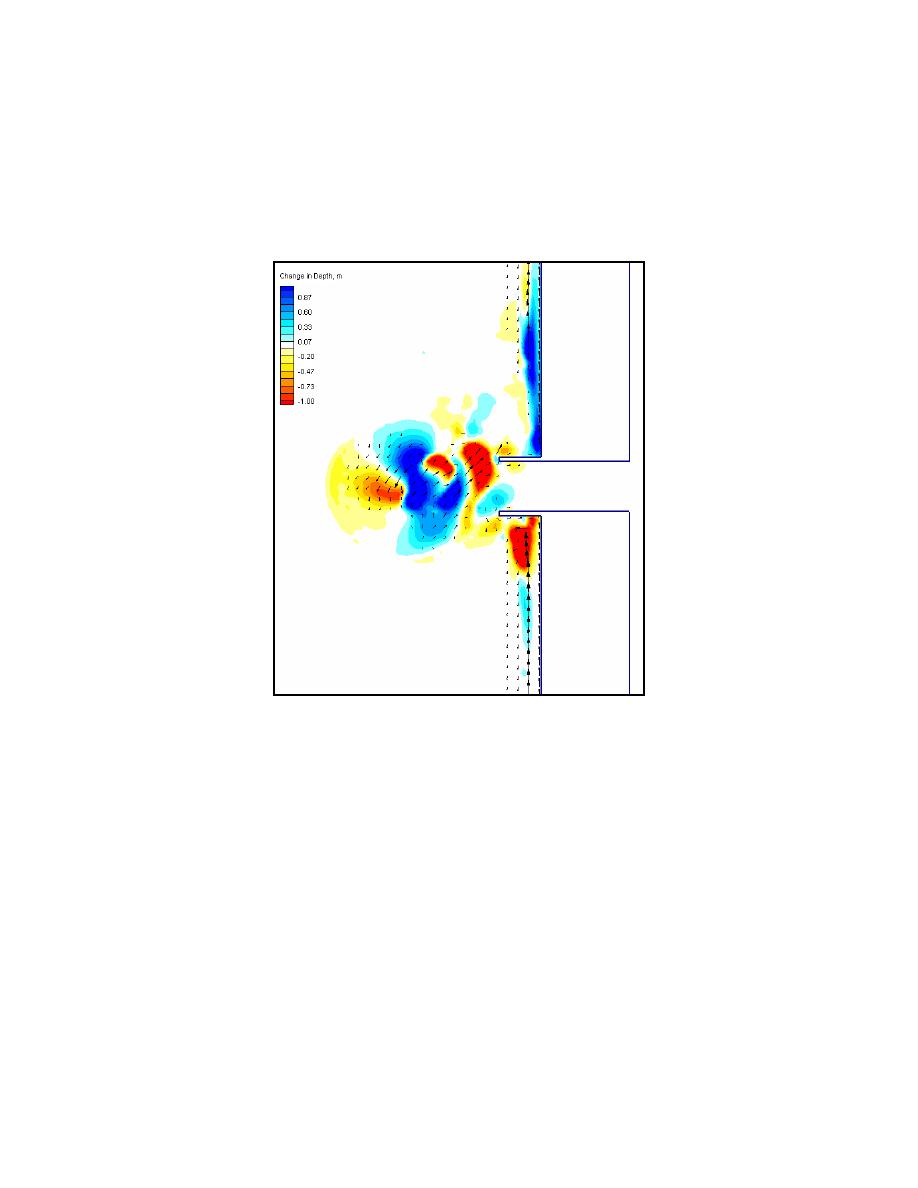
material on the ebb shoal (moving the idealized shoal shape toward equilibrium). Material also
enters the channel, moving around the updrift jetty, and would contribute to tidal bypassing.
The ebb shoal deepens in its central area and shallows on its seaward and northeast flanks.
Transport vectors on the shoal indicate that material bypasses from the central shoal area to the
regions of deposition. Morphology change on the shoal indicates an overall spreading pattern
taking place, as the bathymetry moves toward an equilibrium state with the hydrodynamics.
Fig. 11. Change in depth and transport vectors at hr 99, fair-weather wave
Case 3: Storm Wave
Morphology change and transport vectors at hr 99 from the storm wave simulation are shown
in Fig. 12. Little accretion occurs at the south jetty because the surf zone current forms a rip at
the jetty. Sand then deposits in a deltaic form located southeast of the ebb shoal. Erosion along
the beach north of the north jetty also takes place. Scour holes form at the intersection where the
north jetty meets the beach and in an area centered approximately 500 m north of the jetty (the
jetty is 250 m long). Breaking waves on the ebb shoal transport material to the north and west,
spreading the shoal over a wider area. Material is also transported and deposited inside the south
jetty as a tip shoal. Morphology change on the ebb shoal for the storm waves has a different
pattern than for fair- weather waves, with deposition taking place around most of the perimeter
of the shoal. The fair-weather waves produce a splitting pattern in transport where deposition
takes place on different sides of the shoal. The storm wave produces shoaling in the inlet near
the south jetty and erosion at the north jetty. The fair-weather wave produces erosion at the
south jetty, and a mixed erosion and accretion pattern at the north jetty. These differences at the
inlet entrance and the ebb shoal owe to the different patterns of wave refraction, shoaling, and
breaking on the shoal for the storm and fair-weather waves. Bypassing bars also form up-and
Militello and Kraus
10




 Previous Page
Previous Page
